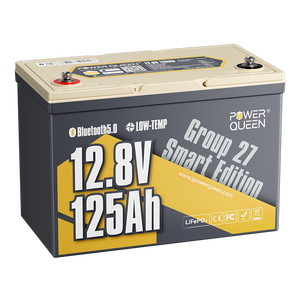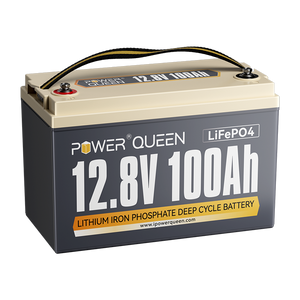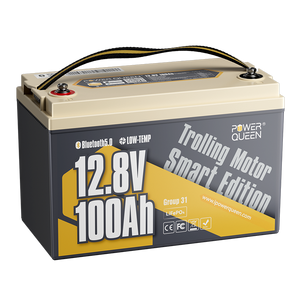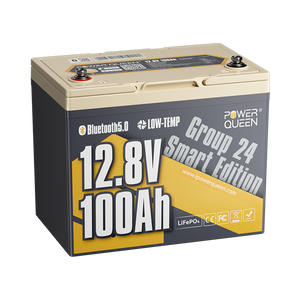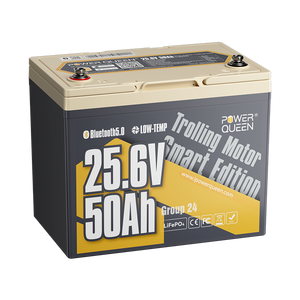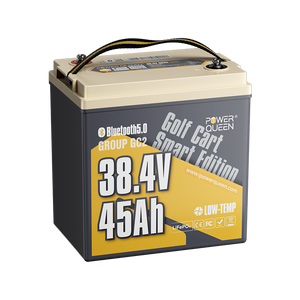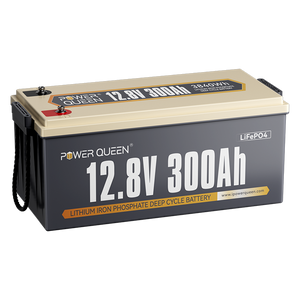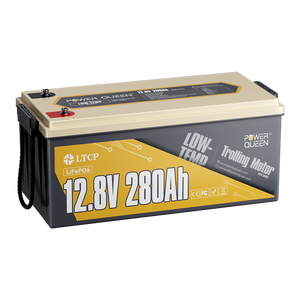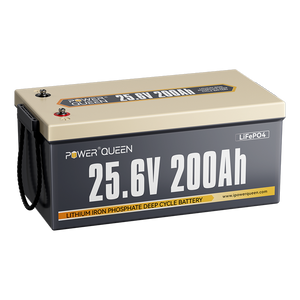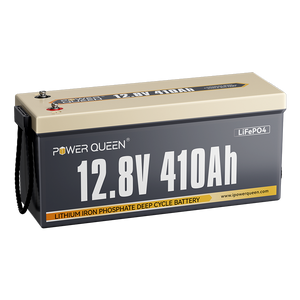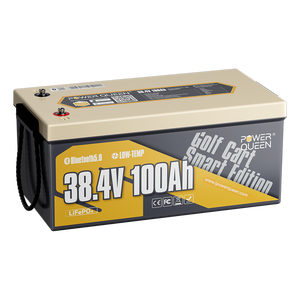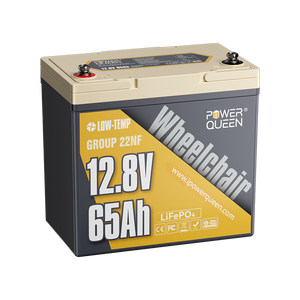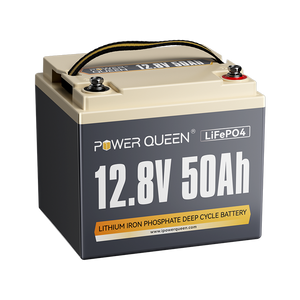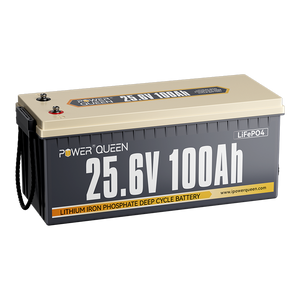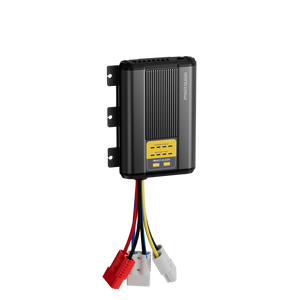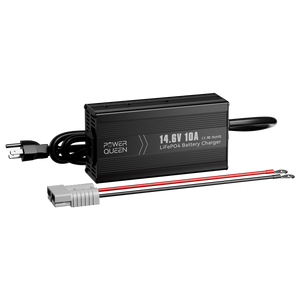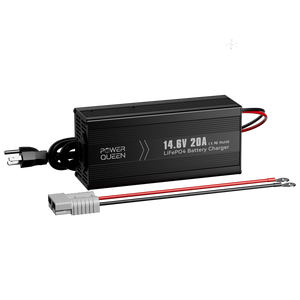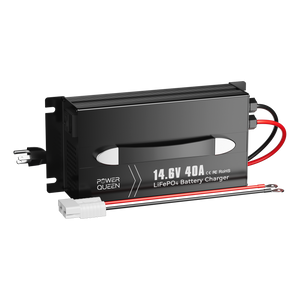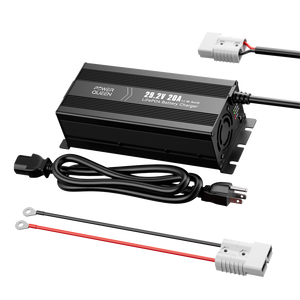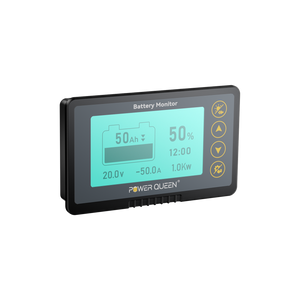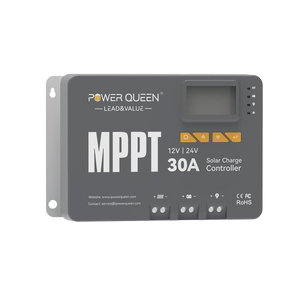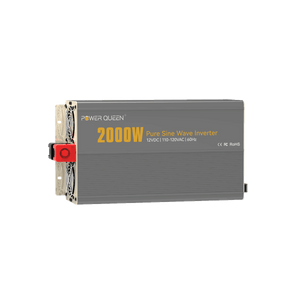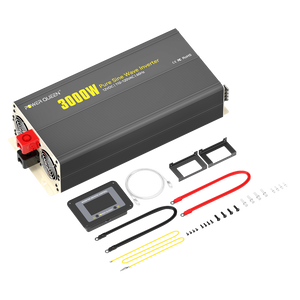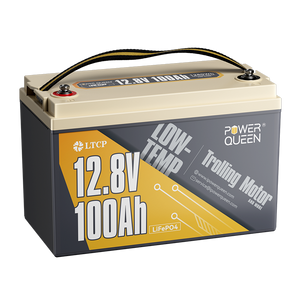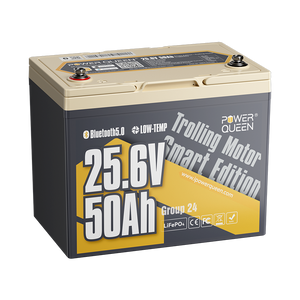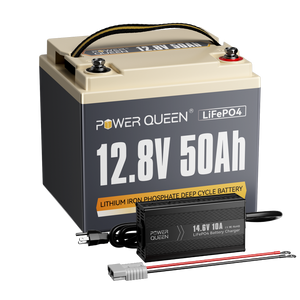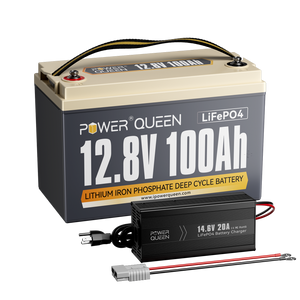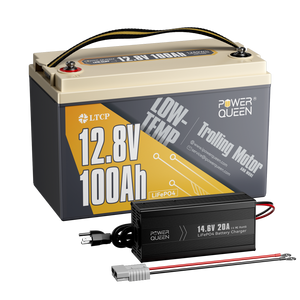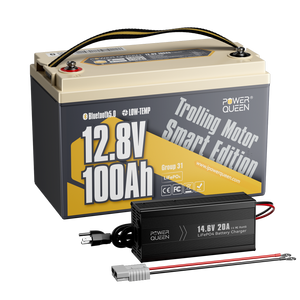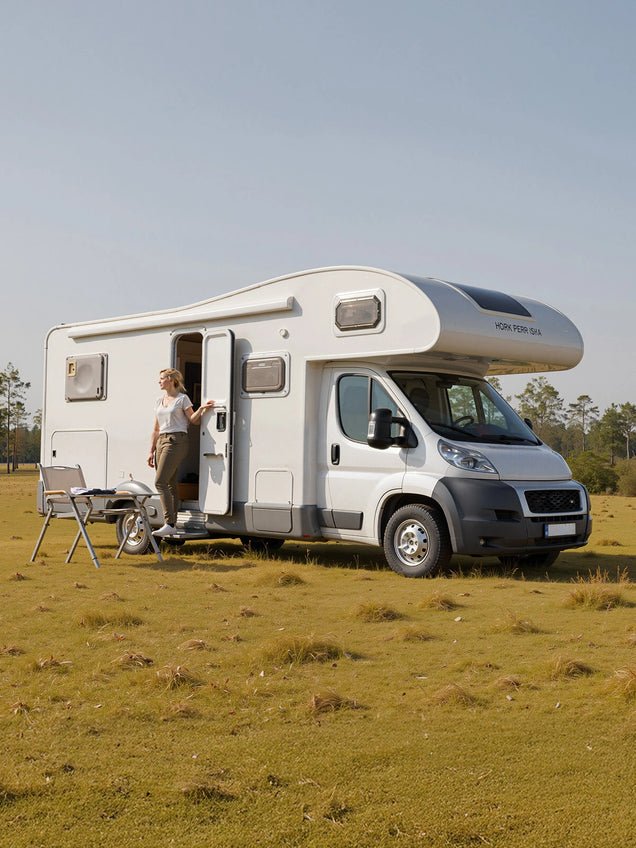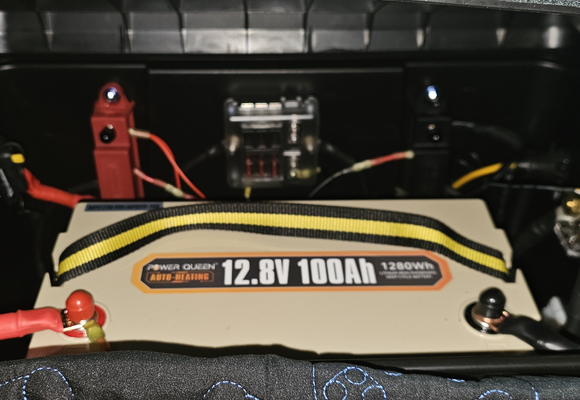Group 24 VS Group 31 Deep Cycle Batteries: AGM VS Lithium
Have you ever delved into the realm of batteries and come across Group 24 and Group 31 deep cycle batteries? These two types are renowned for their dependability and effectiveness, but how do they compare to each other?
In this exploration, we will thoroughly examine the world of batteries, highlighting the essential characteristics, advantages, and disadvantages of both Group 24 and Group 31 batteries.
What is Deep Cycle Battery?
Deep cycle batteries represent a specific category of rechargeable batteries engineered to deliver consistent and continuous power over extended duration. They find widespread use in various applications that demand a steady and reliable electricity supply. These applications include renewable energy systems, boats, RVs, golf carts, and as backup power sources in off-grid or emergency scenarios.
The significant disparity between deep cycle batteries and regular automotive batteries stems from their divergent designs and functionalities. Deep cycle batteries are specifically constructed to withstand repetitive deep discharges and recharges without experiencing significant performance degradation. Conversely, automotive batteries are primarily designed to deliver powerful bursts of energy for engine starting purposes.
Group 24 Batteries: Affordable and Compact Power for Moderate Applications
Group 24 batteries are commonly employed in moderate power applications like marine, RV, solar, and backup power systems. With their compact size, they offer long-lasting power, making them versatile and easy to install in space-limited areas. Moreover, Group 24 batteries are budget-friendly, providing an affordable option for users.
However, it's important to bear in mind that their capacity and lifespan are comparatively lower than larger batteries such as Group 31. Consequently, they may not be suitable for power-intensive applications or situations that require sustained power over extended periods.
Group 31 Batteries: High-Performance Powerhouses for Heavy-Duty Applications
In contrast, Group 31 batteries are renowned for their robust power output and high capacity. They are extensively utilized in demanding tasks like trucking, industrial machinery, and large-scale solar systems.
The substantial capacity of Group 31 batteries enables them to furnish a continuous and dependable power supply for prolonged duration. Furthermore, they boast an extended lifespan, reducing the need for frequent replacements.
However, it is worth noting that their larger physical size can pose installation challenges, particularly in cramped spaces. Additionally, Group 31 batteries tend to be pricier compared to Group 24 batteries, making them less suitable for situations where cost is a significant consideration.
Differentiating AGM Group 24 and Group 31 Deep Cycle Batteries
Discerning the disparities between typical AGM Group 24 and Group 31 batteries is essential for finding the optimal power solution tailored to your unique requirements. This segment will explore the key distinctions encompassing size, capacity, weight, lifespan, and cost.
Size:
Group 24 batteries are generally more compact compared to Group 31 batteries. A typical Group 24 battery measures approximately 10.25 inches in length, 6.81 inches in width, and 9.31 inches in height. In contrast, a standard Group 31 battery has dimensions of around 13.00 inches in length, 6.81 inches in width, and 9.44 inches in height. The smaller size of Group 24 batteries makes them easier to install in space-limited areas.
Capacity:
Group 31 batteries exhibit a higher capacity compared to Group 24 batteries. A typical AGM Group 31 battery has a capacity ranging from 100 Ah to 130 Ah, while Group 24 AGM batteries usually have a capacity between 70 Ah and 85 Ah. The increased capacity of Group 31 batteries allows for more power storage and delivery, making them suitable for power-intensive applications.
Weight:
Due to their larger size and higher capacity, Group 31 batteries tend to be heavier than Group 24 batteries. This weight difference might be a significant factor to consider, especially when mobility or weight restrictions are important. Group 24 batteries, being lighter, can be more convenient in situations where weight plays a crucial role.
Lifespan:
When it comes to lifespan, Group 31 batteries tend to have a longer life expectancy compared to Group 24 batteries. The increased lifespan of Group 31 batteries can be attributed to their larger capacity and overall build quality. Consequently, Group 31 batteries are more suitable for applications where longevity is a crucial consideration.
Cost:
Group 31 batteries are generally more expensive than Group 24 batteries. The higher cost of Group 31 batteries is primarily associated with their larger size, higher capacity, and longer lifespan. If cost is a significant factor, Group 24 batteries provide a more budget-friendly option.
In summary, Group 24 and Group 31 batteries differ in size, capacity, weight, lifespan, and cost. AGM Group 24 batteries are more compact, lighter, and affordable, making them ideal for moderate power applications. On the other hand, AGM Group 31 batteries offer higher capacity, longer lifespan, and increased power output, making them suitable for heavy-duty applications that require sustained power. Considering these distinctions can help you make an informed decision based on your specific power requirements, available space, budget constraints, and desired battery lifespan.
A Brief Comparison Table of Typical AGM Lead Acid Group 24 & Group 31
|
Features |
Group 24 Battery |
Group 31 Battery |
|
Standard Size (LxWxH) |
10.25″ x 6.8125″ x 8.875″ |
13″ x 6.8125″ x 9.4375″ |
|
Weight |
40-50 lbs |
60-70 lbs |
|
Capacity (20-hour rate) |
70-85 Ah |
95-125 Ah |
|
Lifespan |
3-5 years |
4-6 years |
|
Cost |
Typically less expensive |
Typically more expensive |
Advancing Lithium Batteries Beyond Limitations
Power Queen Group 24 and Group 31 lithium LiFePO4 batteries are breaking the limitations of traditional AGM or lead-acid batteries. These advanced lithium batteries offer significant advantages over their conventional counterparts. Let's explore the features and benefits of Power Queen Group 24 and Group 31 batteries.
|
Features |
||
|
Standard Size (LxWxH) |
|
13* 6.77* 8.43 |
|
Weight |
21 lbs |
24.25 lbs |
|
Nominal Voltage |
12.8V |
12.8V |
|
Capacity |
100 Ah |
100 Ah |
|
Lifespan |
10 years+ |
10 years+ |
|
Cost |
Below $250 |
Below $250 |
Size and Weight
The Power Queen batteries in Group 24 and Group 31 sizes are specifically engineered to meet the BCI battery size standard, allowing them to serve as direct substitutes for outdated AGM batteries.

Moreover, Power Queen lithium batteries are significantly lighter, weighing only one-third of AGM lead-acid batteries. The Group 31 battery weighs a mere 24.25 lbs, while the smaller-sized Group 24 weighs 21 lbs.
Capacity
Power Queen's Group 24 and Group 31 batteries both boast a capacity of 100Ah and operate at a nominal voltage of 12.8V.
An outstanding characteristic of Power Queen lithium batteries is their remarkable capacity. These batteries offer a higher energy density, enabling them to store and deliver more power. In comparison to conventional batteries, Power Queen's Group 24 and Group 31 lithium batteries provide a superior capacity, resulting in extended runtimes and enhanced performance.
Lifespan:
Power Queen insists on using Automotive quality LiFePO4 prismatic cells across its lithium battery portfolio, ensuring consistent and dependable performance over the battery's 10-year service life.

This combination of high-quality cells and advanced protective measures allows Power Queen lithium batteries to endure an impressive number of charge-discharge cycles. They can handle 4000 cycles at 100% DOD, 6000 cycles at 80% DOD, and an astonishing 15,000 cycles at 60% DOD, providing an extended lifespan compared to traditional batteries. Consequently, when properly maintained and used, Power Queen's Group 24 and Group 31 lithium batteries often outlast the average AGM or lead-acid battery by a significant margin.
Fast Charging:
Power Queen lithium batteries feature rapid charging capabilities. These batteries can be charged at a much faster rate compared to traditional batteries, saving valuable time and ensuring quick energy replenishment.
With shorter charging times, Power Queen Group 24 and Group 31 lithium batteries can provide a more efficient power supply for various applications.
Suggest reading: How to Charge LiFePO4 Battery?
Safety and Reliability:
Power Queen lithium batteries prioritize safety and reliability. These batteries are equipped with advanced battery management systems (BMS) that monitor and protect against overcharging, over-discharging, and short circuits. Additionally, lithium iron phosphate (LiFePO4) chemistry ensures stable performance and minimizes the risk of thermal runaway or fire.

Environmental Impact:
Power Queen lithium batteries are environmentally friendly alternatives to traditional batteries. They are free from toxic materials like lead or acid, reducing the ecological impact associated with disposal or recycling.
Additionally, their energy efficiency and longer lifespan contribute to lower overall carbon emissions.
In summary, Power Queen Group 24 and Group 31 lithium LiFePO4 batteries offer a range of advantages over traditional AGM or lead-acid batteries. These batteries are compact, lightweight, and have a higher capacity. With longer lifespans, faster charging, enhanced safety features, and environmental benefits, Power Queen lithium batteries are revolutionizing the power storage industry. When considering your power needs, the Power Queen brand provides a reliable and efficient solution for a variety of applications.
Group 31 Lithium Battery with Low-Temperature Protection
Power Queen 12V 100Ah Low-Temp LiFePO4 Battery features the low-temperature charging protection. Same size as group 31, it can be easily replaced. Suggest reading: Do lithium battery freeze?



Conclusion
In summary, the Group 24 and Group 31 deep cycle batteries each have their distinct features that make them suitable for various applications. The choice between the two will primarily depend on your specific requirements and limitations. It's important to consider factors such as power demands, available space, and budget before making a final decision.
